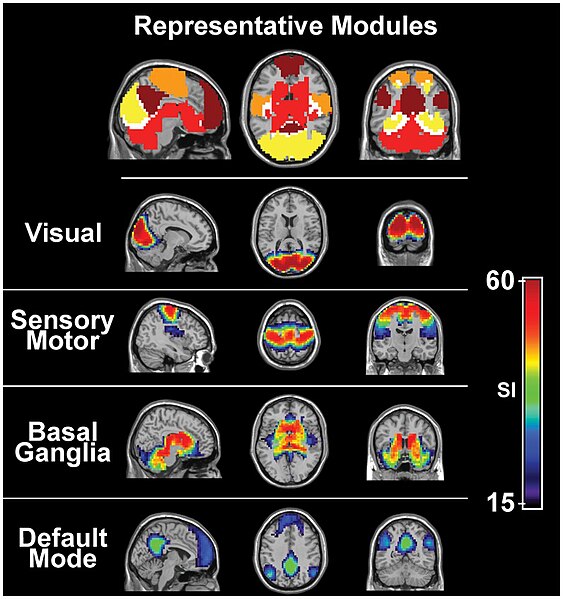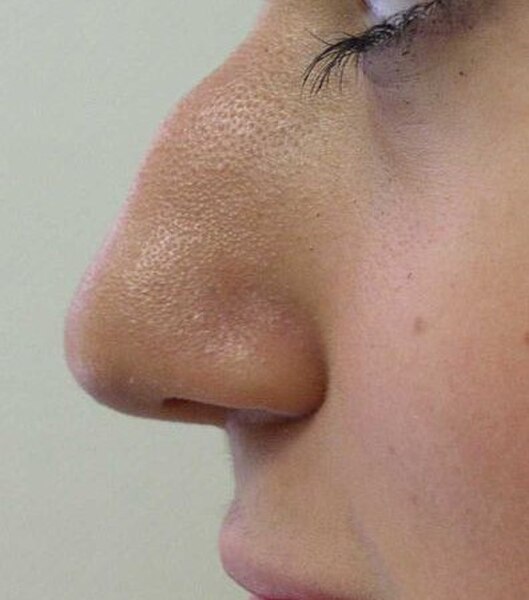The human eye is an organ of the sensory nervous system that reacts to visible light and allows the use of visual information for various purposes including seeing things, keeping balance, and maintaining circadian rhythm.
The eye of the right side of the face, showing its visible components - a white sclera, a light brown iris, and the black pupil, in its orbit surrounded by the lids and lashes
A detailed medical illustration of the eye
MRI scan of the human eye
Eye and orbit anatomy with motor nerves
The sensory nervous system is a part of the nervous system responsible for processing sensory information. A sensory system consists of sensory neurons, neural pathways, and parts of the brain involved in sensory perception and interoception. Commonly recognized sensory systems are those for vision, hearing, touch, taste, smell, balance and visceral sensation. Sense organs are transducers that convert data from the outer physical world to the realm of the mind where people interpret the information, creating their perception of the world around them.
The visual system and the somatosensory system are active even during resting state fMRI
Activation and response in the sensory nervous system
Human ear
Human nose








